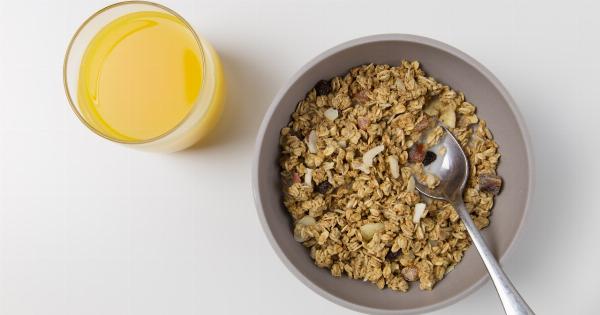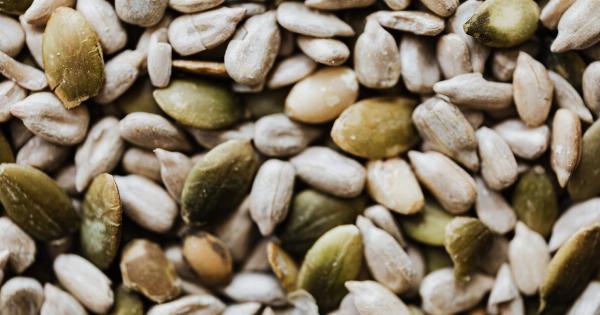Pre-menopause is a phase that every woman goes through before entering menopause. It typically starts in a woman’s late 30s to early 40s and can last for several years.
This transitional period is marked by hormonal fluctuations that can lead to a wide range of symptoms, including hot flashes, mood swings, weight gain, and irregular periods.
While these symptoms are a natural part of the aging process, they can be uncomfortable and impact a woman’s quality of life.
Fortunately, there are various management strategies that can help alleviate pre-menopause symptoms, and one key element in this regard is fiber.
The Role of Fiber in Hormonal Balance
Fiber plays a significant role in maintaining hormonal balance during pre-menopause. Hormone imbalances, particularly estrogen dominance, are common during this phase, and they can contribute to a variety of symptoms.
Fiber helps regulate hormones by binding to excess estrogen and promoting its elimination through the digestive system.
High-fiber diets have been shown to reduce estrogen levels, which can alleviate symptoms such as breast tenderness, bloating, and mood swings.
By promoting a healthy balance of hormones, fiber can help women navigate the pre-menopause phase with greater ease.
Fiber and Weight Management
Weight gain is a common concern during pre-menopause due to hormonal changes and metabolic shifts.
Maintaining a healthy weight is not only important for overall well-being but can also help mitigate certain symptoms, such as hot flashes and joint pain.
Fiber-rich foods are known to promote weight management for various reasons. Firstly, high-fiber foods tend to be more filling, leading to a reduced overall calorie intake.
Secondly, fiber slows down digestion and helps stabilize blood sugar levels, preventing sudden spikes and crashes that can trigger cravings and overeating.
Incorporating fiber into your diet can support healthy weight management during pre-menopause and contribute to an overall feeling of well-being.
The Impact of Fiber on Digestive Health
Digestive issues are common during pre-menopause, including symptoms like bloating, constipation, and indigestion. These concerns can be aggravated by hormonal fluctuations.
Fiber acts as a natural regulator of the digestive system. It adds bulk to the stool and helps prevent constipation by promoting regular bowel movements.
By easing digestive discomfort, fiber can improve overall comfort and well-being during the pre-menopause phase.
How to Increase Fiber Intake
Now that we understand the significance of fiber in managing pre-menopause symptoms, let’s explore some ways to incorporate more fiber into your daily diet:.
1. Choose Whole Grains
Swap refined grains for whole grains to increase your fiber intake. Opt for whole wheat bread, brown rice, quinoa, and oatmeal. These options are nutrient-dense and contain higher levels of fiber compared to their refined counterparts.
2. Load Up on Fruits and Vegetables
Fruits and vegetables are excellent sources of dietary fiber. Include a variety of fresh produce in your meals, such as berries, leafy greens, broccoli, and carrots. These foods are not only high in fiber but also rich in essential vitamins and minerals.
3. Don’t Forget Legumes
Legumes, including beans, lentils, and chickpeas, are a fantastic source of plant-based protein and fiber. Add them to soups, stews, salads, or even make delicious vegetarian burgers or dips to increase your daily fiber intake.
4. Snack on Nuts and Seeds
Nuts and seeds, like almonds, chia seeds, and flaxseeds, are not only packed with fiber but also provide healthy fats and essential nutrients.
Snack on a handful of nuts or sprinkle some seeds on your yogurt or salads to boost your fiber intake throughout the day.
5. Try Psyllium Husk
Psyllium husk is a soluble fiber supplement that can be easily added to your diet. It absorbs water and forms a gel-like substance in the digestive tract, aiding in regular bowel movements.
Add a spoonful to your smoothies, yogurt, or simply mix it with water.
6. Prioritize Fiber-Rich Snacks
When choosing snacks, opt for fiber-rich options like popcorn, whole grain crackers, or raw vegetables with hummus. These choices not only satisfy your cravings but also provide a healthy dose of fiber.
7. Stay Hydrated
Drinking an adequate amount of water is crucial for your digestive health. Fiber absorbs water, so it’s important to stay hydrated to ensure proper digestion and prevent constipation.
8. Practice Portion Control
While increasing fiber intake is beneficial, it’s important to do so gradually and pair it with appropriate fluid intake. Sudden increases in fiber intake without enough fluids can cause bloating and discomfort.
Start by incorporating small portions of fiber-rich foods and gradually increase them as your body adjusts.
9. Consult a Healthcare Professional
If you have specific dietary concerns or are unsure how to incorporate more fiber into your diet, it’s always a good idea to consult a healthcare professional or a registered dietitian.
They can provide personalized advice and guide you in managing your pre-menopause symptoms effectively.
10. Be Consistent
Consistency is key when it comes to managing pre-menopause symptoms with fiber. Aim to incorporate fiber-rich foods into your daily meals and snacks consistently.
Over time, you will experience the positive impact of fiber on your hormonal balance, weight management, and digestive health.
In conclusion, fiber plays a vital role in managing pre-menopause symptoms. By incorporating high-fiber foods into your diet, you can support hormonal balance, maintain a healthy weight, and improve digestive health.
Don’t underestimate the power of fiber in alleviating discomfort and enhancing overall well-being during this transitional phase.






























